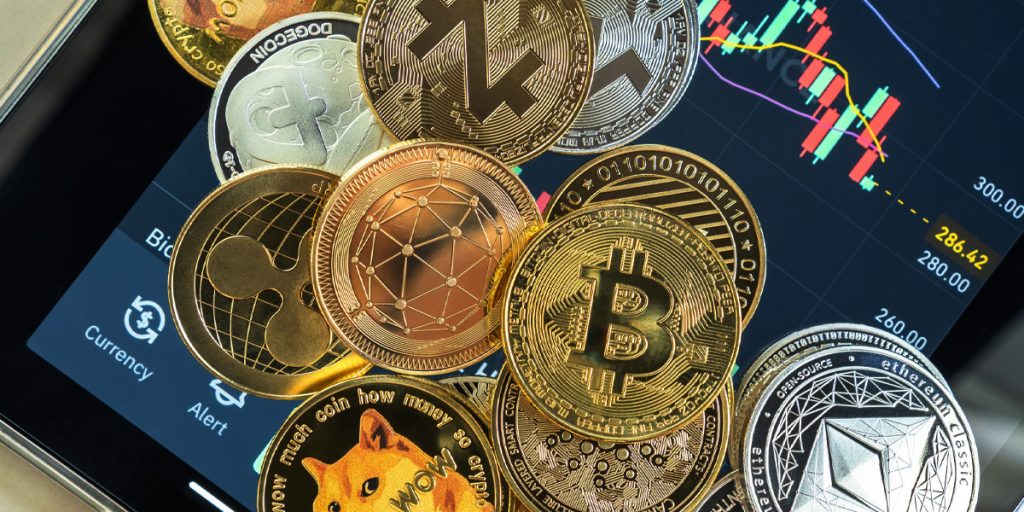The Rise of Cryptocurrency Exchanges: Choosing the Right Platform
As digital currencies transform global finance, cryptocurrency exchanges continue evolving accessibility. This comprehensive guide reviews top platforms empowering participation. Whether exploring blockchain for the first time or managing diversified portfolios, tailored exchanges now deliver premier trading. We’ll explore high-volume leaders, specialized niche providers and essential criteria for informed selection. Understanding exchange models optimizes user experience and security. Keep reading to maximize opportunities in this burgeoning digital economy!
What is a Cryptocurrency Exchange?
Cryptocurrency exchanges have evolved significantly since the early days over a decade ago to play a pivotal role in the growth of this burgeoning asset class by providing regulated, secure and efficient marketplaces connecting buyers and sellers of digital assets from all corners of the globe. Some pioneering platforms like Coinbase and Binance first emerged as the trading volume of Bitcoin surged in popularity, demonstrating real demand from both retail and institutional investors seeking exposure.
Today, exchanges offer infrastructure supporting a wide variety of coins and tokens through either centralized or decentralized architectures. Services have expanded far beyond basic trading functionality to include advanced features like margin trading, lending/borrowing, derivatives, staking and more. At the same time, exchanges aim to continuously strengthen processes focused on risk mitigation, regulatory compliance and user protection.
The model selected also impacts important considerations like trading costs, liquidity availability and degree of control over private keys. Overall, exchanges have streamlined participation while prioritizing operational security as the foundation for building long-term trust.
Centralized vs Decentralized
When selecting an exchange, one of the first key determinations is whether a centralized or decentralized structure best fits individual needs. Centralized exchanges operate in a similar manner to traditional financial intermediaries, maintaining order books and user accounts on proprietary company servers. While the centralized model provides advantages in terms of usability, liquidity and customer support, it requires placing trust in the exchange to employ robust security measures and safeguard assets.
In contrast, decentralized exchanges facilitate peer-to-peer trading without a central entity through smart contracts executed directly on public blockchains. This removes centralized risks but demands a higher degree of technical proficiency. Hybrid structures attempting to combine benefits of both models have also emerged. A thoughtful evaluation of these architectural differences is important as it directly impacts aspects like legal jurisdiction, risk exposure and level of control preserved.
Leading Centralized Exchanges
Several major centralized cryptocurrency exchanges have established themselves as industry leaders through consistently delivering robust services, deep liquidity across many trading pairs, and expanding feature sets to serve the needs of traders of all experience levels. Coinbase was one of the pioneering platforms catering to mainstream adoption by prioritizing an intuitive, easy-to-use interface optimized for beginners. Today, it remains a top on-ramp for first-time crypto buyers in many regions. Binance currently dominates crypto trading by reported volume thanks to its unparalleled listing of over 500 digital assets and incorporation of innovative products. Kraken excels at meeting the demands of experienced traders through low fees and advanced order types.
Meanwhile, Gemini focuses on compliance and security with various licenses and the industry’s first SOC2 Type 1 examination. Other prominent options like Bittrex, Poloniex and Huobi also offer diversified selections of coins while establishing a track record over many years. Thoroughly researching trading volume, jurisdiction, fee structures, payment/withdrawal support and more can help identify the best-suited major CEX based on individual circumstances.
Niche Exchange Specialization
While industry giants facilitate the majority of global crypto trading, some exchanges have found success by laser focusing their resources and tailoring offerings towards certain user profiles or use cases. FTX, for example, leads the growing crypto derivatives market. KuCoin fills an important role by frequently listing smaller market cap digital assets that may lack exposure on larger platforms. HitBTC was among the earliest to cater to altcoin traders. Mobile-focused platforms like the Crypto.com App optimize the experience for active traders on the go.
Coinmama simplifies the fiat onramp for buying Bitcoin or Ethereum. Gemini targets regulated services for institutions. Idex specializes as a DEX specifically for ERC-20 tokens. With such a diverse array of coins and needs across the burgeoning industry, specialized exchanges play a complementary role by leveraging vertical expertise. Their presence expands the overall crypto economy.
Implementation Strategies

Once an exchange is selected, proactively practicing prudent operational security methods is paramount to fully realizing the benefits while minimizing threats. Comprehensively comparing all relevant exchange features, fees, jurisdiction, insurance offerings and reputation amongst peers lays the groundwork for an informed choice. Enrolling in free or low-cost two-factor authentication via authenticator apps provides strong account access protection.
Safeguarding private keys by never storing substantial funds directly on exchanges and using hardware or paper wallets eliminates single points of failure. Diversifying holdings across multiple trusted platforms as a backup mitigates the risk of any single disruption. Downloading software only from official sources and employing unique, complex passwords combined with anti-virus software upholds device-level safety.
Bookmarking exchange help resources in advance simplifies obtaining timely support if issues do arise. Offline storage of account recovery details replicated in multiple secure locations ensures account recovery capability. Monitoring announcements for upgrades and proactively planning around scheduled maintenance windows helps minimize trading disruptions. Joining exchange-specific user forums promotes staying informed on the latest trends, potential risks and community sentiment. Overall, prioritizing security optimization across people, processes and technology forms the foundation for confident long-term participation in this evolving industry.
Trading Platforms Compared
Exchanges deliver the core trading functionality through proprietary platforms developed in-house or via third-party integrations. Web-based interfaces optimized for basic spot trading via any modern browser maximize convenience for casual users. However, advanced traders often prefer dedicated desktop applications like the popular Binance and Kraken offerings featuring enhanced technical charting, order types and functionality. Such platforms allow leveraging more screen real estate compared to a mobile experience. Meanwhile, streamlined mobile apps have gained widespread adoption for their ability to facilitate on-the-go access while traveling or commuting.
This accessibility comes with the caveat of smaller screens requiring extra vigilance. Third-party trading platforms also exist that integrate with multiple exchanges via public APIs, allowing a unified view of accounts and order management across venues. Comparing key factors like available assets/pairs, order types, built-in trading tools, customer support quality, and the learning curve for each interface type empowers matching specific needs to the optimal platform.
Funding Options Analyzed
The deposit and withdrawal mechanisms supported by an exchange hold importance by impacting related costs, processing speeds and account limits. Major centralized exchanges commonly facilitate quick access to digital asset markets by accepting credit/debit cards and domestic bank transfers. Peer-to-peer marketplaces as well as payment centers extending cash-based access in certain regions further broaden onramp options. International wire transfers cater larger fiat transaction amounts but typically charge premium fees.
Meanwhile, stablecoins pegged to reserve assets minimize volatility risks during fund transfers while often processing at lower expenses. Thoroughly researching the specific funding methods supported against an individual’s needs, location and preferred payment methods represents an important due diligence task to identify optimal solutions minimizing associated friction. Setting appropriate deposit limits also mitigates security risks.
Read More: Things to Know Before Investing in Cryptocurrencies
Trading Tools Demystified
Exchanges equip users with specialized features and services tailored to a wide range of experience levels within digital asset trading. For beginners, registration and identity verification unlocks basic spot trading functionality without leverage. Meanwhile, advanced tools like limit orders, stop-loss orders and margin/futures trading require more nuanced strategies but equip experienced portfolio managers with sophisticated risk management mechanisms.
Some platforms also operate crypto lending markets where idle balances can be loaned out to earn interest. Elsewhere, staking services generate rewards by allocating funds to validate transactions and power proof-of-stake blockchains. Understanding how capabilities scale depending on verification tiers or other qualifications helps optimize the approach based on current skills. Exchanges simultaneously offer educational resources to expand knowledge over time.
Security Best Practices
Given the high values often involved with cryptocurrency trading and investment, exchanges rightly focus on fortifying security as the top priority. Users can complement such efforts through diligently practicing prudent behaviors as the last line of defense. Setting up unique, complex passwords combined with free or low-cost two-factor authentication via authenticator apps forms a basic yet powerful layer of account access protection. White-listing withdrawal addresses and avoiding clicking unsolicited links or downloading unverified third-party applications upholds safety.
Encrypting devices employed for crypto activities while backing up all private keys, seed phrases and account recovery details offline across multiple secure storage mediums builds redundancy. Staying vigilant against phishing scams and verifying communications directly with platforms preserves credentials. Leveraging insurance when available provides additional reassurance for covered cases. Storing the majority of holdings in cold storage further reduces





